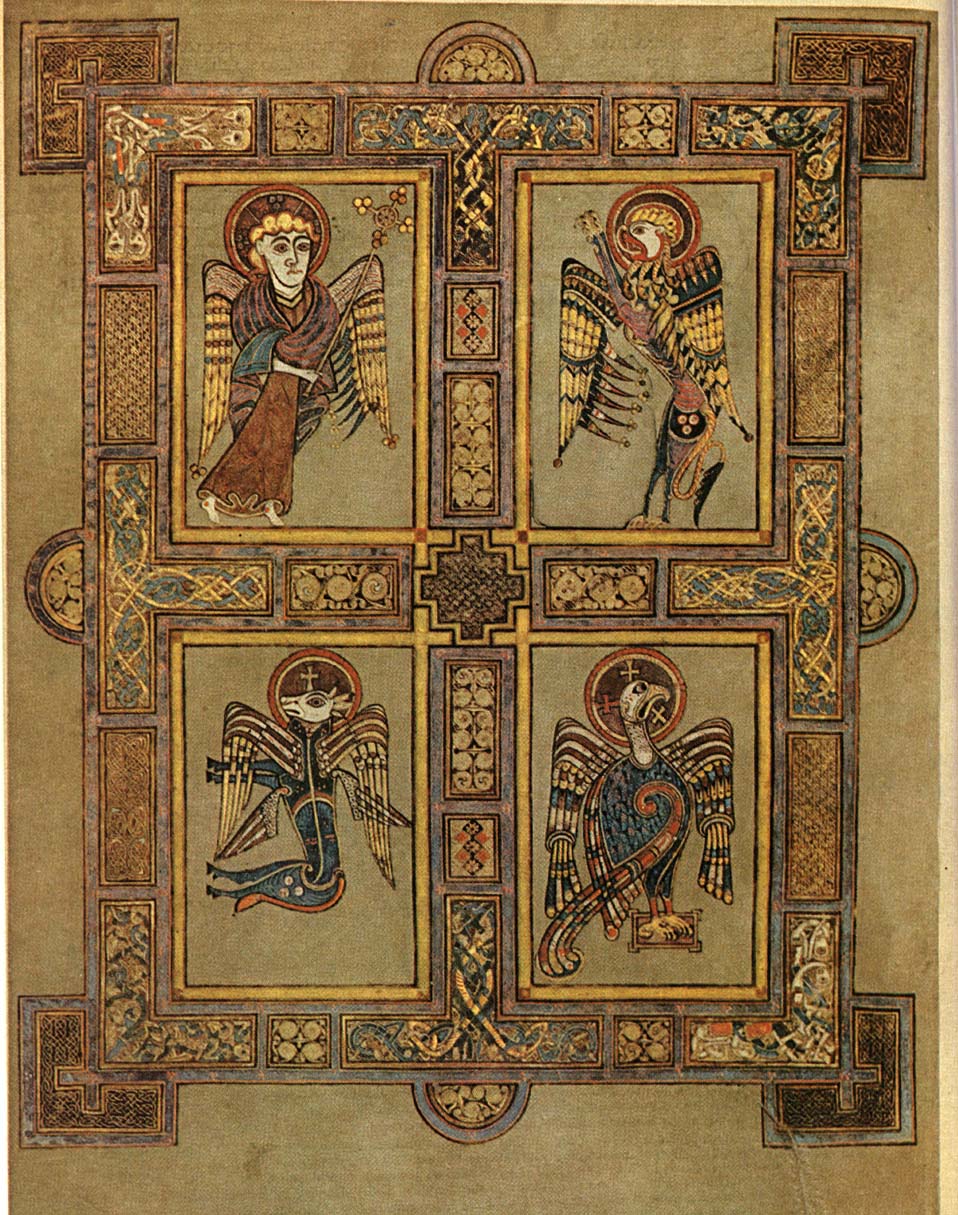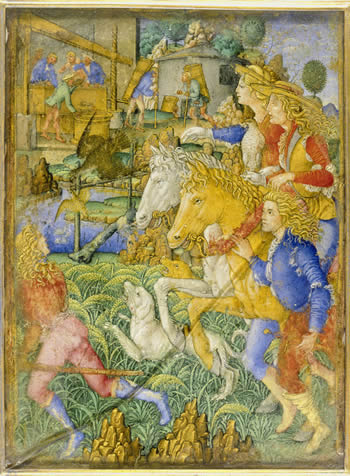Major Acquistion:
THE MEDIEVAL EUROPEAN LIBRARY
# 23 The Book of Kells |
|||||||
 |
|||||||
| Click on an image to see a larger version.
|
|||||||
| The Book of Kells (less widely known as The Book of Columba) is an ornately illustrated manuscript, produced by Celtic monks around AD 800. It is one of the most lavish illuminated manuscripts to survive the mediŠval period. Because of its technical brilliance and great beauty, it is considered by many scholars to be one of the most important works in the history of mediŠval art. It contains the four gospels of the Bible in Latin, along with prefatory and explanatory matter, all decorated with numerous colourful illustrations and illuminations. Today it is on permanent display at the Trinity College Library in Dublin, Ireland. |
| # 24 The Sforza Hours | |
| This is the last missing leaf of the
Sforza Hours - a stunning miniature depicting the occupations of the month of October. The Sforza Hours, one of the British Library's outstanding treasures, was commissioned in about 1490 and not completed until 30 years later. A Book of Hours is a Christian book for private devotions; this magnificent example measures only 130 x 95mm. It was owned by two of the richest and most powerful women of the age and was illuminated by two of the greatest artists of the age. In one book the Italian and northern Renaissances come face to face. The manuscript was commissioned about 1490 for Bona of Savoy, widow of Galeazzo Sforza, Duke of Milan. It was decorated by Giovan Pietro Birago, a leading Milanese illuminator much favoured by the ducal court, whose style shows familiarity with the work of Mantegna and Leonardo da Vinci. Even before work on the book was finished, a number of major illustrated pages had been stolen from Birago's workshop and the book remained incomplete for more than quarter of a century until it passed into the hands of Margaret of Austria, Regent of the Netherlands and Bona's niece by marriage. In 1519-20 she arranged for the missing pages to be supplied by her own court painter, Gerard Horenbout, one of the most famous Flemish painters of the day. |
 |
# 25 The Lindisfarne Gospels |
 |
| The Lindisfarne Gospels is the most important surviving treasure from early Northumbria (Northern England). Written between 715 and 720 in honour of St Cuthbert, Bishop of Lindisfarne, who died in 687, it is a masterpiece of book production and a wonderful historic and artistic document. The manuscript was made in the monastery of Lindisfarne, on Holy Island, off the coast of modern-day Northumberland. Almost everything we know about the origin of the manuscript comes from a note in Anglo-Saxon inserted, probably between 950 and 970, by a priest named Aldred (afterwards Provost of Chester-le-Street), who also put an Anglo-Saxon 'gloss', or word-for-word translation, between the lines of the Latin text. This note, in modern English translation, reads:
The Gospels remained at Lindisfarne until 875, when it accompanied the monks on their flight before the invading Danes. From 883 to 995 the Lindisfarne community remained at Chester-le-Street, near Durham, finally settling at Durham itself in the latter year. The manuscript probably lost its original binding at the time of Henry VIII's Dissolution of the Monasteries in the 16th century. Early in the 17th century it was acquired by Sir Robert Cotton from Robert Bowyer, Clerk of the Parliaments. His collection came to the British Museum in the 18th century, and from there to the British Library. |
| A description of the Gospels with a number of digitized images can be found in the Digital Catalogue of Illuminated Manuscripts. Also, go to "Lindisfarne Gospels" to look at the book online at <http:// Turning the Pages |
| The Question: Do you think a child-centered
education encourages self-absorption? Has the Age of Individualism gone too far,
and now we need a "corrective" of returning a more community-minded
education? Why do you think teachers have suffered a loss of status in our society? Why might there be a lack of faith in the institution of education? |






